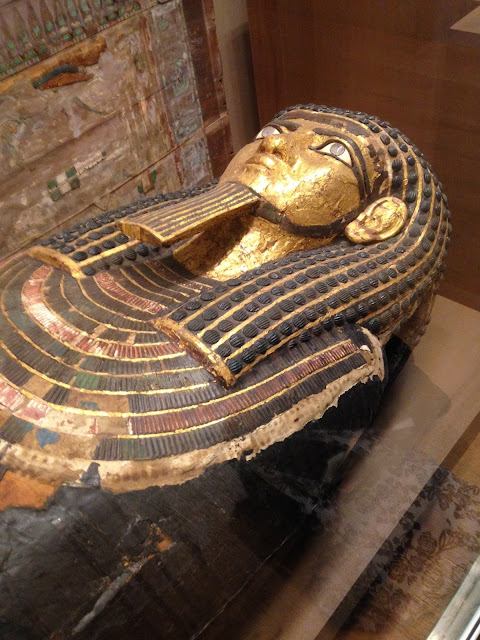Day 397 - Caravaggio and Caracci
January 13, 2025
Gallery 620 is a long rectangle filled chock-a-block with late 16th century and 17th century Italian paintings, almost all on religious subjects. Many are by artists I've never heard of before, among them, Carlo Saraceni, Alessandro Turchi, and Scipione Pulzone. A number show figures in highly dramatic poses, among them Artemisia Gentileschi's large canvas depicting Esther fainting away before Ahasuerus and Guido Cagnacci's Cleopatra gazing skyward as she holds the asp to her artfully exposed breast.
I prefer more naturalism, I guess, and that's reflected in the two works I chose to write about today. Indicative of that naturalism, none of the figures in these two religious paintings wears a halo.
One is a Caravaggio oil dating from the early 1600s and entitled "The Holy Family with the Infant Saint John the Baptist." Measuring about 48 inches high and 40 inches wide, the painting is tightly composed: The figures form a kind of V against the dark background. Joseph and John are clearly of secondary importance: Joseph is in the rear and in shadow, John is shown from the back, looking up. Our eyes, like John's, are drawn to the Virgin and child, on whom the light in the painting falls. Christ is portrayed not as a tiny baby but as a toddler; he stands, in full frontal nudity, his arms around his mother's neck, and looks down at John. Mary, in contrast, gazes out at us, unsmiling, and clad in a simple rose-colored dress. She looks like a 15-year-old Italian girl, and that is why I like the painting so much.
The second painting is a "Lamentation" by Ludovico Carracci, perhaps 60 inches wide and 40 inches high and dating to about 1582. I am struck above all by Christ's angular, bony, gray corpse; there is nothing idealized about his body.
But I'm annoyed that this impressive painting is hung over a doorway, way above eye level. In fact, many of the paintings in this gallery are double-hung. Really, if a painting is worth exhibiting, it's worth being exhibited in a way that it can be seen without craning.





Comments
Post a Comment